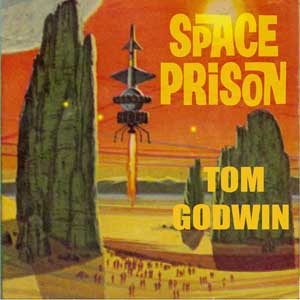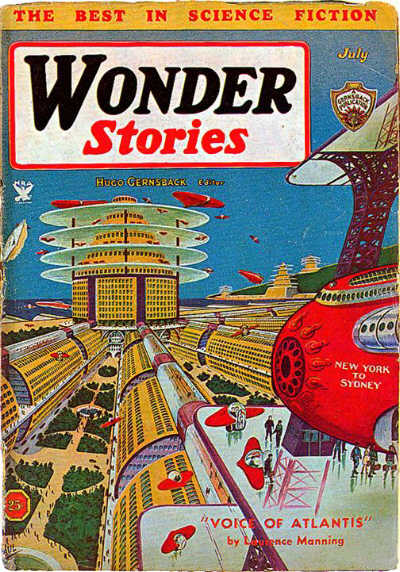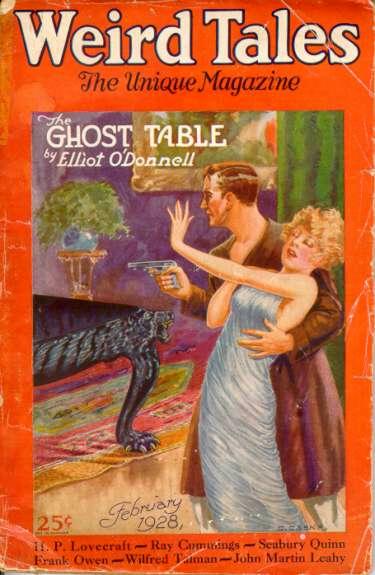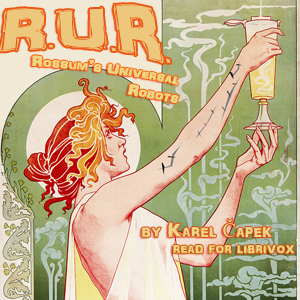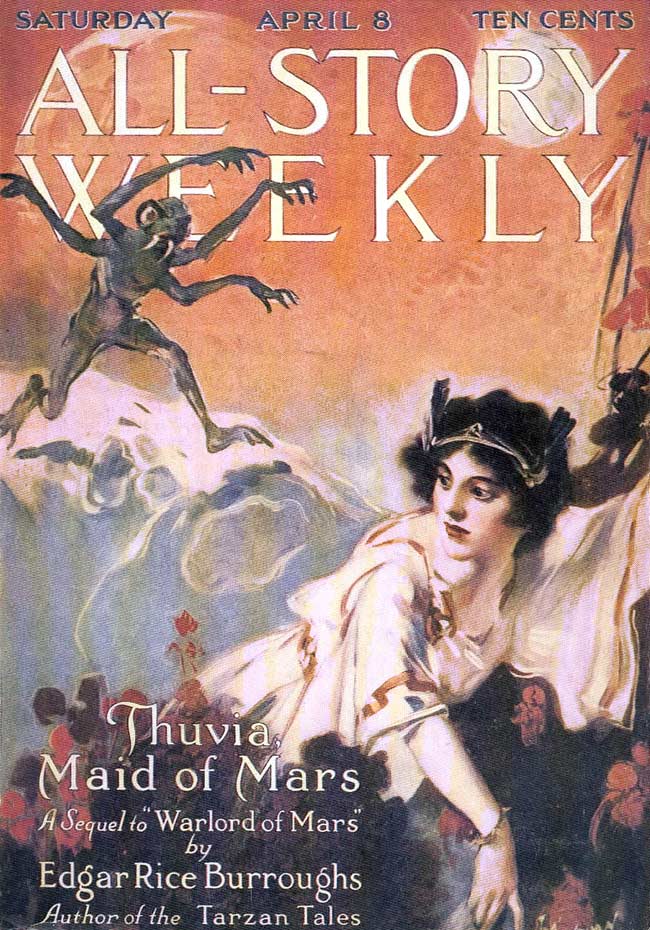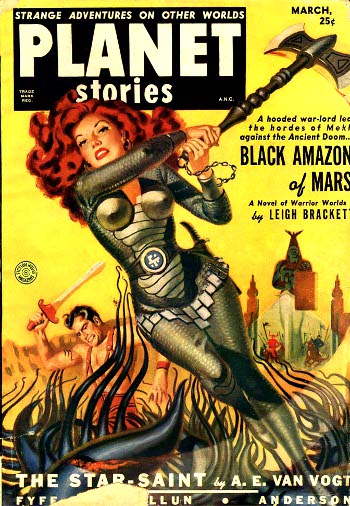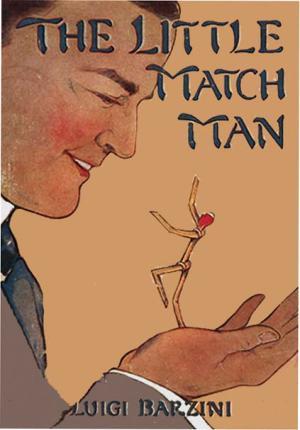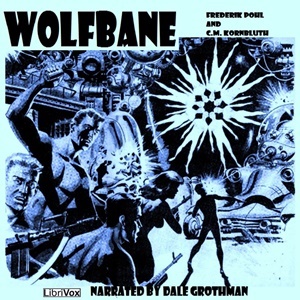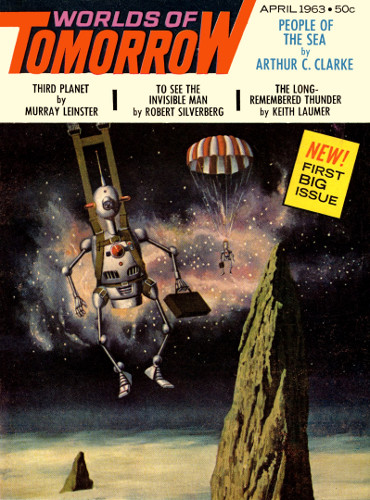A regular exploration of public domain genre works available through Project Gutenberg, Internet Archive, and Librivox.
By Colleen McMahon: This week I found a likely forgotten gem that might be of use for anyone interested in tracking down and reading or collecting stories published in old magazines: An Index on the Weird and Fantastica in Magazines. This is an index and checklist on weird fiction published in magazines from the beginning of the pulp era in the late 19th century through the date of publication (1953).
Bradford Day compiled this index, though his introduction acknowledges several earlier indexers whose lists he incorporated into this work.
In addition to thoroughly covering Weird Tales from its beginnings in 1923 through the then-present day, there are partial listings for a bunch of other magazines. Even more valuable, I think, are the listings of “fantastic fiction” stories that appeared in mostly mainstream story magazines like Argosy, Blue Book, Munsey’s and others. This saves the weird fiction fan from having to sift through the western, adventure, mystery, and romance tales that were the main material in those magazines.
Although many of the stories are likely still under copyright, there are plenty that were published before 1924, which puts them solidly in the public domain. This index provides a lovely treasure map for anyone interested in seeking them out. Plenty of the issues are collected on Internet Archive as well, so you can easily end up spending an afternoon flipping through the index and then seeing what you can find right there on the same site (ask me how I know this)!
Bradford M. Day (1916-2004), the creator of this index, also compiled a number of indexes and guides to early science fiction, fantasy, and horror stories and novels at a time when almost no one was cataloging publications in the field as a whole. In fact, the Science Fiction Encylopedia describes him as “US sf collector and book-dealer whose bibliographical work was one of the foundations on which modern sf scholarship has been built.”
Day published An Index on Weird and Fantastica and several other checklists in the early 1950s, and then updated and republished them periodically into the 1990s. The early editions all appear to be hand typed and mimeographed or photocopied, so these were truly labors of love.
In addition to the overall indexes, Day also compiled and published bibliographies for some of the early individual authors, including H. Rider Haggard, Talbot Mundy, Sax Rohmer, Edgar Rice Burroughs, and others.
Internet Archive also has Day’s Complete Checklist of Science Fiction Magazines, though this may not be of much interest to modern fans since it simply lists magazine titles and issue numbers rather than contents. The Science Fiction Index website does the same, and is complete through the present day.

James E. Gunn (1923- ) is one of just a handful of authors I have written about here who is still alive, and he celebrated his 96th birthday on July 12th. In addition to his own fiction writing, he was one of the first academics to specialize in teaching science fiction. He founded the Gunn Center for the Study of Science Fiction at the University of Kansas. The Center is the home base for the Speculative Fiction Writer’s Workshop, the Campbell Conference (an annual academic conference on science fiction), and the Campbell and Sturgeon awards. Gunn is a past president of SFWA and was named a Grand Master in 2007.
A novella and a short story are in the public domain:
- Breaking Point (from Space Science Fiction, March 1953) (Librivox audiobook)
- The Gravity Business (from Galaxy, January 1956) (included in Librivox anthology, Short Science Fiction Collection 053)
Donald E. Westlake (1933-2008) shares a birthday with James E. Gunn. Though best known for his crime fiction, he wrote some SF stories as well. Three are available on Project Gutenberg:
- The Spy in the Elevator (from Galaxy, October 1961)
- The Risk Profession (Amazing Stories, March 1961)
- They Also Serve (Analog, September 1961)
All three stories have been recorded in short science fiction collections at Librivox.
Cordwainer Smith (1913-1966) was a pseudonym for Paul Myron Anthony Linebarger, who in his “day job” was a scholar on East Asia and an expert on psychological warfare. Only one of his science fiction stories is available through Project Gutenberg, but several of his nonfiction scholarly works are also available. His book on psychological warfare looks particularly interesting.
The science fiction story is The Game of Rat and Dragon (Galaxy, October 1955). There are three versions available on Librivox.
Librivox recently passed the 13,000 milestone — 13,000 free public domain audiobooks available, all recorded by volunteers! Among the recent releases:
- Five
Continental Op Stories
by Dashiell Hammett (1894-1961)
Before Sam Spade chased the black bird in The Maltese Falcon and Nick and Nora Charles stirred their first martinis in The Thin Man, the Continental Op walked early twentieth century San Francisco’s mean streets for the Continental Detective Agency. Dashiell Hammett used his own experiences as a Pinkerton operative to lend realistic detail to this creation. These first five stories were published in Black Mask magazine in 1923.
(Note: I know that this falls outside the SFF arena, but Hammett has a lot of fans and it’s exciting to see some of his earliest works becoming available! I was the prooflistener for this project and I can attest that the stories are fun and the reader is very good.)
- The Golden
Maiden and Other Folk and Fairy Stories Told in Armenia by A. G. Seklemian (?? – 1920)
Armenians trace their history back to before the time of the Babylonians and earliest recorded history – in fact, to Togarmah, a grandson of Japhet, Noah’s son, who settled in Armenia after the Ark came to rest on Mount Ararat. Armenia was also the first State in the world to adopt Christianity as their official religion, around the 3rd Century AD. This book contains many wonderful folk and fairy tales culled from this long history of the Armenian country people, to whom all nature is full of stories, by the scholar and storyteller Mr. A. G. Seklemian.
- Four
Science Fiction Stories
by Alan E. Nourse (1928-1992)
Four Science Fiction stories published in Science Fiction Adventures Magazine and Galaxy Science Fiction, written by Alan Edward Nourse. He was an American science fiction writer and physician. He wrote both juvenile and adult science fiction, as well as nonfiction works about medicine and science. His SF works sometimes focused on medicine and/or psionics.

